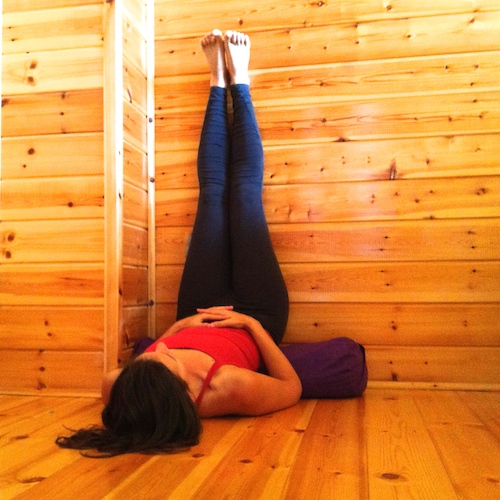I am sitting on the backless chair, tears of pain choking my throat.
I am trying to breathe as peacefully as I can, and yet I sound like a woman in labor. The physiotherapist is pushing and pulling my right arm, trying to perform his magic in retrieving my right shoulder’s range of movement.
I recite a mantra: I am not my body. I am a golden cloud, light and buoyant. I am an eternal soul, a conscious mind. Then the pain is too much, I voice an “ow ow ow ow,” and the physiotherapist lets go and tries a different angle. No matter what he does, my frozen shoulder seems to be indifferent.
Flashbacks from the prime of my yoga practice flood my imagination. I see myself jumping back into a perfect chaturanga while maintaining a steady ujjayi, or getting through a beautiful backbend into kapotasana. I was on the verge of completing intermediate and moving into the third series of the ashtanga vinyasa practice. Or so I dreamt.
Today, I can barely lift my hand up, or take my forearm behind my back, not to mention doing reverse namaste. Trauma, limitation and chronic pain are served on my plate. Their taste is so bitter compared to the sweetness of the physical strength and freedom I experienced in the past.
Self accusations start spinning me around. How could this happen to me? I’ve always taken great care of my body. I’ve never risked it with extreme activities. I’ve studied alignment based practice from the best teachers and maintained an alignment-conscious practice.
So why was I so eager to jump into this chaturanga when my body was not ready for that? Why did I practice painfully for months before I checked my shoulder? Why did I listen to the yoga teacher who pushed me into the pain of my condition and made it worse?
Frozen shoulder rarely appears in people under 40 years old. This injury made me face the changes that come naturally with aging. At the age of 41, it takes my body longer to heal. Two years ago, the same jump into chaturanga could have resulted in one or two days of pain.
It is said that pain is inevitable, suffering is optional. I don’t have a choice regarding the healing of my shoulder, but I can choose my attitude towards it. I can drown myself in self pity and misery, or I can see my new limitation as an opportunity. After a few practices that concluded in me crying like a baby in a child-pose on my mat, I decided to take the later approach.
Getting back to the Yoga Sutra of Patanjali, I reminded myself that, “Yoga is to still the patterning of consciousness.”* This can be done even with an injured shoulder, or no shoulder at all! Yoga is not about third series, so who cares?
After years of practicing the exact same sequences, I was forced into being more creative and playful with my practice, and found that it could actually be fun! Moon salutations can be as exhilarating as sun salutation and put much less stress on the shoulder.
Maintaining standing asanas for 10 breaths can be as warming as jumping back and forward. Nāvāsana can be used as alternative vinyasas between sitting asanas. Instead of inversions, I found the enormous benefits of legs-on-the-wall with a bolster underneath my sacrum. I’ve started practicing for the health of my body and completely let go of my ego’s nourishment.
Maty Ezraty once said something along these lines: when you are a hundred years old, before you leave this life, you would not care whether you could do a handstand. What would matter to you is whether the practice helped you change your patterns in a way that brought more happiness to you and to others.
The true gift of my yoga practice then, is to help me create a blessing out of my injury rather than being miserable about it. But don’t get me wrong, I’m not saying that injuries are good!
A yoga teacher who studied with one of the big yoga gurus in India, was once asked what he thought about the many injuries caused to students by his guru’s adjustments. The teacher replied the injuries were a means to restructure the body for the sake of a higher goal. Richard Freeman says that if your alignment is good, the asana should be pleasant, and this is the approach I much more relate to.
It’s always better to learn from the mistakes of others, so make sure your practice is beneficial for your body. Learn to separate a healthy challenge from a harmful pain. Don’t let any teacher push you to go through pain—you are the one who have to live inside your body for the rest of your life. And if you ever get injured, go get it checked and seek a professional advice, better sooner than later.
* Translation of sutra 1.2 yogas chitta-vrtti-nirodaha , Yoga Sutra of Patanjali by Chip Hartranft.
Love elephant and want to go steady?
Sign up for our (curated) daily and weekly newsletters!
Editor: Travis May
Photo: Author’s own.







Read 0 comments and reply